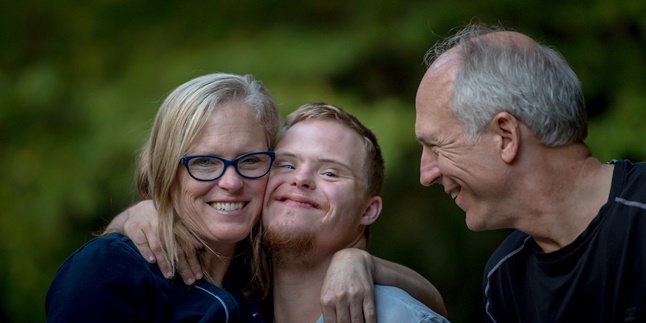Kapanlagi.com - There are babies who are identified as having Down Syndrome at birth. These patients have certain physical characteristics, such as low muscle tone, a single crease in the palm of the hand, a slightly flat face, and slanted eyes. Maybe you have already met them directly, but what is the actual meaning of Down Syndrome?
You can understand the meaning of Down Syndrome by reading the explanation about the symptoms, risk factors, and the necessary treatments or therapies. Before that, babies with physical characteristics of Down Syndrome also need to undergo several examinations. These examinations include chromosome analysis or karyotype and FISH to confirm the diagnosis in a shorter time.
Furthermore, individuals with Down Syndrome can undergo a series of therapies in order to be able to carry out activities independently and avoid complications. Because there is currently no cure for this condition. Well, for those of you who want to know more about the meaning of Down Syndrome, please read the following explanation.
1. What is Down Syndrome?

Illustration (Credit: Unsplash)
What is Down Syndrome? Down Syndrome or Down's Syndrome is a genetic disorder that causes individuals to experience several impairments. This term has also been absorbed into the Indonesian language.
According to the Great Indonesian Dictionary (KBBI), the meaning of Down Syndrome is a genetic disorder caused by the appearance of an extra chromosome on chromosome 21, characterized by mental retardation and physical characteristics such as a flat face, small ears, slanted eyes, and a small mouth; mongolism; mongoloid2.
According to information from the Alodokter website, Down Syndrome is a genetic disorder that causes individuals to have low levels of intelligence and distinctive physical abnormalities. Some individuals with Down Syndrome experience mild impairments, but there are also those who experience severe impairments that can lead to heart disease.
Down Syndrome is one of the relatively common chromosomal disorders or genetic disorders.
2. Symptoms of Down Syndrome

Illustration (Credit: Unsplash)
Based on information from the Alodokter website, WHO estimates that there are 3000 to 5000 babies born with Down syndrome every year. Although this condition cannot be cured, patients can still live and carry out activities independently if they receive proper treatment.
Therefore, after understanding the meaning of Down syndrome, you also need to know the recognizable symptoms.
1. Hands with only one fold.
2. Birth weight and length below the average weight.
3. Upward and outward slanting eyes.
4. Small mouth size.
5. Short stature.
6. Small head size.
7. Protruding tongue.
8. Small nose and flat nasal bone.
9. Wide hands with short fingers.
10. Wide gap between the first and second toes.
There is other information that you need to know about Down syndrome, namely its types. Down syndrome also has several types, including:
1. Translocation type occurs in about 4 individuals with Down syndrome. Translocation is a rare type that may be inherited from parents to children.
2. Mosaicism is the rarest type. This type has a milder condition and less growth impairment.
3. Trisomy 21 is the most common type of Down syndrome and is experienced by more than 90 percent of individuals with Down syndrome.
3. Risk Factors of Down Syndrome

Illustration (Credit: Unsplash)
To complete the understanding of what Down Syndrome means, you also need to pay attention to several risk factors. One of the factors is the age of the woman during pregnancy. For more detailed information, you can refer to the explanation provided by Halodoc's website.
1. Women who are pregnant at the age of 35 or older.
2. The mother's age during pregnancy is a factor that can increase the risk of having a baby with Down Syndrome.
3. Women who have a child with Down Syndrome are at risk of giving birth to a baby with the condition in subsequent pregnancies.
4. Having a sibling with Down Syndrome.
5. If you have a baby with Down Syndrome.
6. Genetic factors.
4. Treatment for Down Syndrome

Illustration (Credit: Unsplash)
If you have a loved one with Down syndrome, regularly communicate with a doctor. Proper treatment will help the patient live and function independently. Next, understand the following treatment steps.
1. Physiotherapy.
2. Speech therapy.
3. Occupational therapy.
4. Behavioral therapy.
Although there is no cure for this condition, with the support of family and the above therapies, patients can live independently and avoid possible complications. Therefore, this needs to be taken into consideration.
Well, KLovers, that is an explanation of the meaning of Down syndrome along with its symptoms, types, risk factors, and treatment that you need to pay attention to.
(kpl/gen/ans)
Disclaimer: This translation from Bahasa Indonesia to English has been generated by Artificial Intelligence.
















